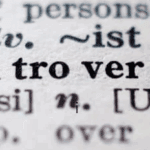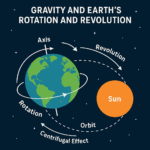
Exploring the Vast Train Network of India

Key Statistics of Indian Railways
| Parameter | Statistic |
|---|---|
| Total Track Length | 121,407 kilometers |
| Number of Stations | Over 7,349 |
| Daily Passengers | Approximately 23 million |
| Daily Freight Carried | Over 3 million tons |
| Number of Employees | Over 1.3 million |
| Total Annual Revenue (2022-2023) | ₹2.19 trillion (approx. $29 billion USD) |
| Number of Trains Operated Daily | Around 13,452 |
| Largest Station (by area) | Gorakhpur Junction (spanning 4,483.3 meters) |
| Longest Train Route | Dibrugarh-Kanyakumari Vivek Express (4,286 km) |
| Busiest Station (by footfall) | Howrah Junction (over 1 million passengers daily) |
Passenger Services
| Train Category | Description | Example Trains |
|---|---|---|
| Luxury Trains | High-end services with premium amenities and tour packages | Maharajas’ Express, Palace on Wheels |
| Express Trains | Fast services with fewer stops, connecting major cities | Rajdhani Express, Shatabdi Express |
| Mail/Express Trains | Standard long-distance trains connecting various regions | Howrah Mail, Chennai Express |
| Passenger Trains | Local trains serving short distances with frequent stops | Mumbai Local, Chennai Suburban |
| Metro Trains | Urban transit systems in major cities | Delhi Metro, Kolkata Metro |
Freight Services
| Commodity | Annual Freight (2022-2023) |
|---|---|
| Coal | 700 million tons |
| Cement | 100 million tons |
| Food Grains | 50 million tons |
| Iron Ore | 200 million tons |
| Petroleum Products | 35 million tons |
Technological Advancements
| Innovation | Description |
|---|---|
| Dedicated Freight Corridors | Special corridors for freight trains to reduce congestion and improve speed |
| High-Speed Rail | Introduction of high-speed trains like the Vande Bharat Express |
| Online Ticketing | Comprehensive e-ticketing system through IRCTC |
| GPS and Wi-Fi | GPS-enabled trains and Wi-Fi facilities at major stations |
| Automatic Signaling | Advanced signaling systems to enhance safety and efficiency |
Challenges and Future Plans
| Future Initiatives | Description |
|---|---|
| Electrification | Aim to electrify the entire network by 2030 |
| High-Speed Corridors | Development of more high-speed rail corridors |
| Modernization of Stations | Upgrading major stations to world-class standards |
| Green Initiatives | Implementation of eco-friendly technologies |
| Private Sector Participation | Encouraging private investment in rail infrastructure |
Interesting Facts in Numbers
| Fact | Statistic/Detail |
|---|---|
| Longest Platform | Gorakhpur Junction in Uttar Pradesh, measuring 1,366.33 meters |
| Most Extensive Coverage | Indian Railways covers over 67,368 kilometers of track, making it the fourth-largest in the world |
| Highest Railway Bridge | Chenab Bridge in Jammu and Kashmir, standing 359 meters above the river |
| Oldest Functioning Locomotive | The Fairy Queen, built in 1855, still operational |
| First Train Service | April 16, 1853, between Bombay (Mumbai) and Thane, covering 34 kilometers |
| Employment | Over 1.3 million employees, making it one of the largest employers in the world |
| Passenger Carriages Operated Daily | Over 70,000 |
| Bridges | Over 147,523 |
| Annual Passenger Travel | Approximately 8.4 billion passengers |
Real-Life Impact: Connecting Lives and Economies
Case Study: Mumbai Local Trains
| Parameter | Statistic/Detail |
|---|---|
| Daily Passengers | Over 7.5 million |
| Number of Routes | Multiple routes connecting various parts of Mumbai |
| Key Features | High frequency, vital for daily commuters |
| Challenges | Overcrowding, punctuality issues |
| Impact | Essential for Mumbai’s urban infrastructure |
Conclusion
Indian Railways is a testament to the country’s engineering prowess and organizational capability. Its vast network, serving millions daily, underscores its importance in the socio-economic landscape of India. As the nation moves forward with ambitious plans for modernization and expansion, Indian Railways will continue to be the backbone of transportation, connecting lives and powering economies.
Indian Railways is not just a mode of transport; it’s a journey through the heart of India, reflecting its diversity, challenges, and aspirations. Whether it’s the daily commute of a Mumbai office-goer or the cross-country journey of a tourist, the train network weaves together countless stories, each contributing to the vibrant tapestry of India.
Hello, I am Aman (: Full Time Traveler :) At the age of 41, in April 2023, fueled by my love for travel and the determination not to remain fixed like a tree, I embarked on a bold journey. Having dedicated 17 years to a corporate job, I chose to transition from a full-time employee to a full-time traveler, driven by the desire to break free from the routine and constraints of a conventional life. Along the way, I not only explored the wonders of travel but also uncovered the transformative power of financial freedom. I realized how it could liberate me to lead a life teeming with adventure, purpose, and fulfillment. Through my blogs, I am passionately sharing my story, aiming to inspire and provide valuable guidance to those, like me, who aspire to weave travel into a life overflowing with limitless possibilities.






















Post Comment
You must be logged in to post a comment.